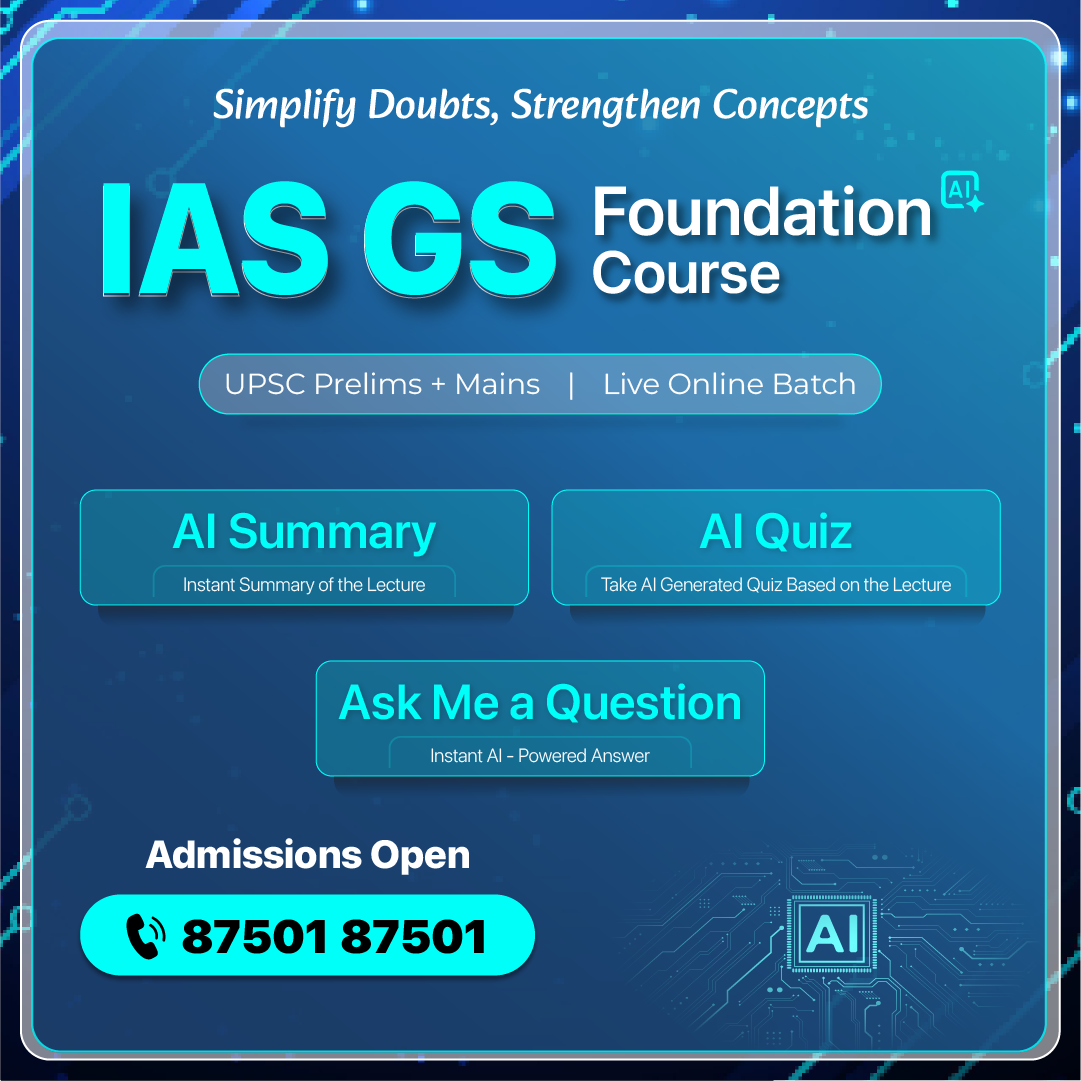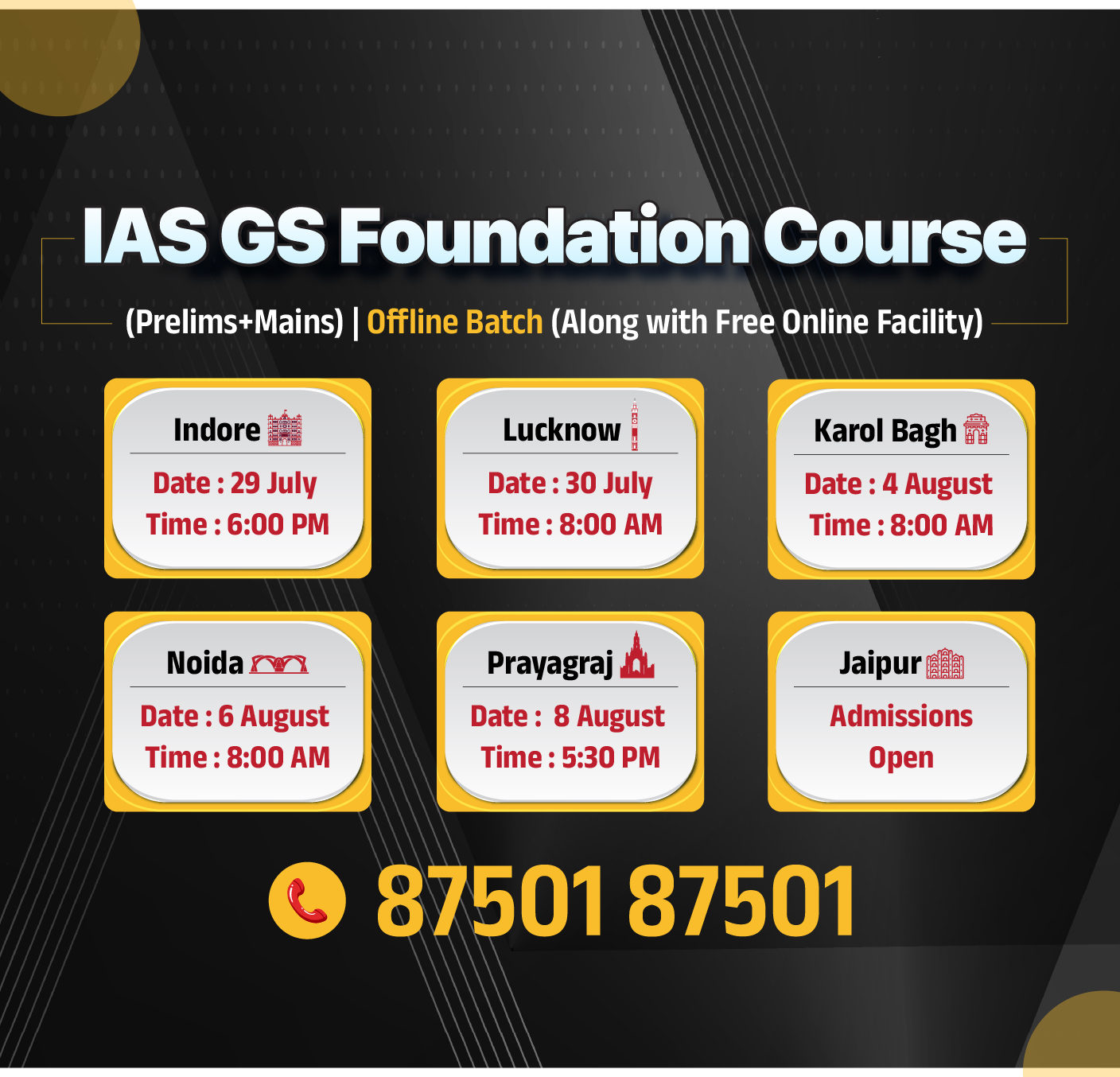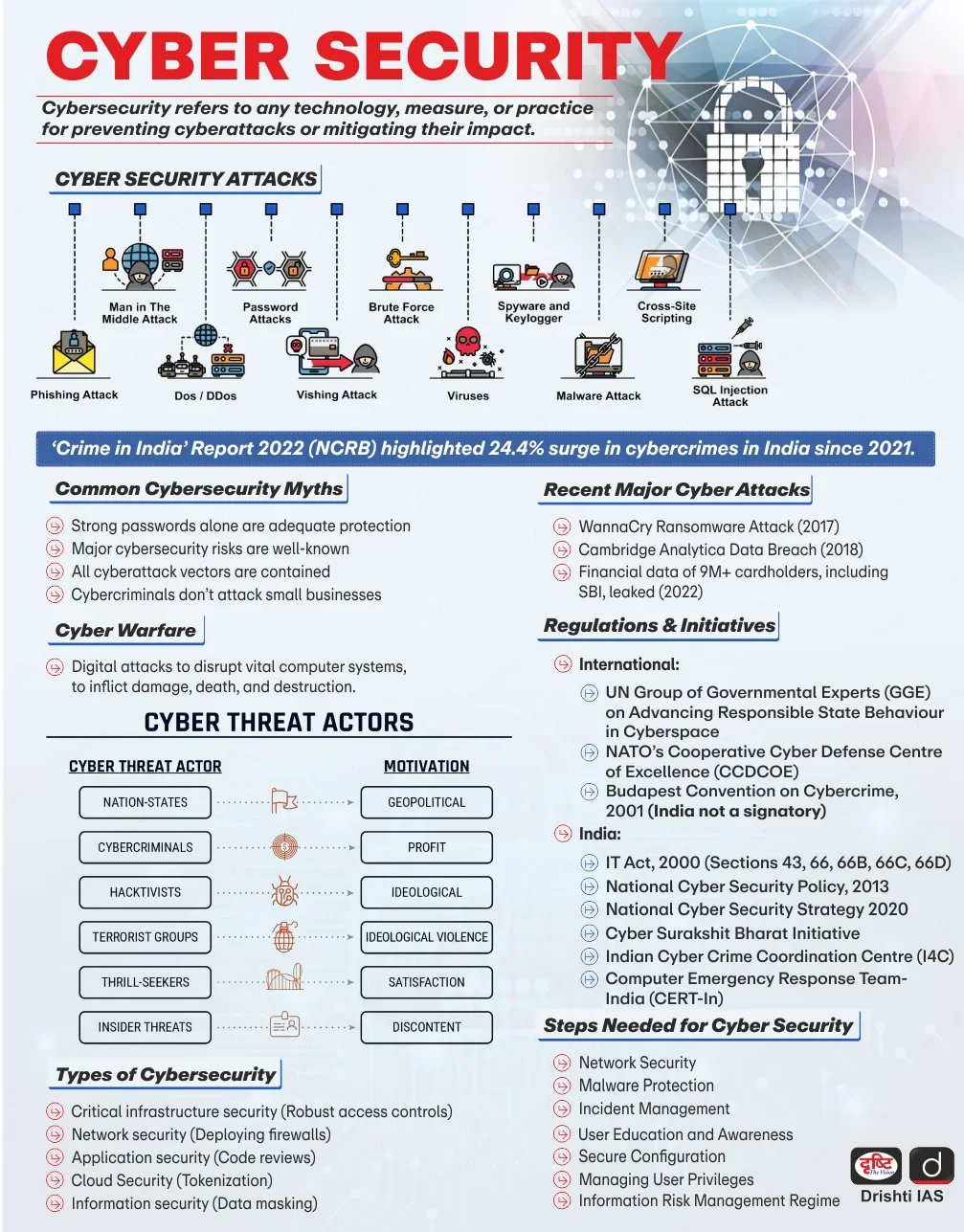Social Justice
Ending Manual Scavenging
For Prelims: Manual Scavenging, NAMASTE Scheme, Article 17, Article 21, Prohibition of Employment as Manual Scavengers and their Rehabilitation Act, 2013, Hepatitis, Tetanus, Rashtriya Garima Abhiyan, Swachh Bharat Mission, PM-DAKSH, MGNREGA.
For Mains: Key challenges faced by manual scavengers and steps taken to address them. Additional measures needed to end manual scavenging.
Why in News?
A Ministry of Social Justice study analyzed 54 hazardous cleaning deaths linked to manual scavenging (out of 150 nationwide) across 8 States/UTs during 2022–2023.
What are the Key Findings of the Study?
- Lack of Safety Gear: In 90% of cases (49 out of 54), no safety equipment was provided. The rest had minimal protection—gloves in 5 cases and gloves with gumboots in 1.
- Most deaths occurred in the absence of mechanized equipment such as suction pumps or robotic cleaners.
- Institutional Negligence: In most cases, agencies lacked equipment readiness, and awareness drives were either absent or incomplete, even in places where they were conducted.
- No Informed Consent: Many workers entered sewers without consent, and even when written consent was taken, they were not informed of associated risks.
- Exploitative Hiring Practices: Most workers were hired informally on individual contracts, with only a few as direct government or outsourced PSU employees.
What is Manual Scavenging and the Legal Framework Addressing It?
- About: Manual scavenging refers to the practice of manually handling or cleaning human excreta, often from insanitary toilets, open drains, pits, or railway tracks.
- Current Status: According to the government, manual scavenging has officially ended, and the current challenge lies in addressing the issue of hazardous cleaning of sewers and septic tanks.
- The NAMASTE scheme has identified 84,902 sewer and septic tank workers across 36 States and Union Territories in India.
- Violation of Fundamental Rights: Manual scavenging violates fundamental rights, particularly Article 17 (abolition of untouchability) and Article 21 (right to life with dignity).
- Legal Framework:
- Prohibition of Employment as Manual Scavengers and their Rehabilitation Act, 2013 (PEMSR): India banned it under the PEMSR Act, 2013, which prohibits any individual from manually handling human excreta in any form until its final disposal.
- The Act identifies manual scavenging as a dehumanizing practice.
- SC/ST (Prevention of Atrocities) Act, 1989: It criminalizes the employment of Scheduled Castes in manual scavenging.
- Prohibition of Employment as Manual Scavengers and their Rehabilitation Act, 2013 (PEMSR): India banned it under the PEMSR Act, 2013, which prohibits any individual from manually handling human excreta in any form until its final disposal.
- Supreme Court (SC) Guidelines: In Dr. Balram Singh v. Union of India (2023), the SC directed the Union and State governments to eliminate manual scavenging and hazardous cleaning across the country. SC guidelines included:
- Rehabilitation: Rs 30 lakh for deaths, Rs 10–20 lakh for disabilities, plus jobs for kin and education for dependents.
- Accountability: Penalties and contract cancellations for negligence.
- NALSA: To oversee compensation disbursement and create standard models.
- Transparency: Launch of a portal to track deaths, compensation, and rehabilitation.
What are the Key Challenges Faced by Manual Scavengers?
- Health Risks: Exposure to human waste and toxic gases like hydrogen sulphide makes manual scavengers vulnerable to Hepatitis, Tetanus, Cholera, and asphyxiation.
- Social Stigma: Seen as untouchables, they face caste-based discrimination, reinforcing social exclusion and the caste system
- Economic Challenges: Paid below minimum wage, often on contractual/daily-wage basis, with no job security or social protection, trapping them in poverty.
- Double Discrimination: Women face gender-based exploitation, including sexual harassment, abuse, and economic inequality.
- Psychological Issues: Social stigma and poor work conditions cause anxiety, depression, and low self-esteem.
- Substance Abuse: Many turn to drug use to cope with stress, humiliation, and physical hardship, worsening their health.
India’s Initiatives to Curb Manual Scavenging
- NAMASTE (National Action for Mechanised Sanitation Ecosystem)
- Safaimitra Suraksha Challenge
- Swachhta Abhiyan App
- National Commission for Safai Karamchari
- Technological Initiatives:
- Bandicoot Robot: Remotely or autonomously cleans and unclogs sewer lines.
- Endobot & Swasth AI: Detect and prevent pipeline issues like contamination and overflows.
- Vacuum Trucks: Remove sewage using powerful suction, avoiding manual entry.
What Effective Measures can be Taken to End Manual Scavenging in India?
- Strict Enforcement of Laws: Strictly enforce the PEMSR Act, 2013 with stringent penalties for violators, treat sewer deaths as culpable homicide, and ensure compensation in line with Supreme Court directives.
- Complete Mechanization: Ensure 100% mechanized cleaning with suction pumps, jetting machines, and robots by funding equipment procurement under Swachh Bharat Mission 2.0 and equipping all urban local bodies.
- Rehabilitation & Alternative Livelihoods: Train manual scavengers under PM-DAKSH for roles in waste management, and machine operation, with preferential hiring in urban bodies under MGNREGA.
- Health Screenings: Conduct regular health screenings for sanitation workers in all Urban Local Bodies (ULBs), focusing on respiratory and skin-related ailments, along with defined treatment and prevention protocols.
Conclusion
Manual scavenging persists despite legal bans, exposing systemic failures in enforcement, mechanization, and rehabilitation. Strict implementation of laws, complete mechanization, and dignified alternative livelihoods are crucial to eradicate this dehumanizing practice. Political will, technology adoption, and societal change must converge to uphold sanitation workers' rights and dignity under India's constitutional framework.
|
Drishti Mains Question: Analyze the social and economic challenges faced by manual scavengers and suggest a sustainable rehabilitation roadmap. |
UPSC Civil Services Examination, Previous Year Question (PYQ)
Prelims
Q. ‘Rashtriya Garima Abhiyaan’ is a national campaign to (2016)
(a) rehabilitate the homeless and destitute persons and provide them with suitable sources of livelihood
(b) release the sex workers from their practice and provide them with alternative sources of livelihood
(c) eradicate the practice of manual scavenging and rehabilitate the manual scavengers
(d) release the bonded labourers from their bondage and rehabilitate them
Ans: (c)
Mains
Q. What are the impediments in disposing of the huge quantities of discarded solid waste which are continuously being generated? How do we safely remove the toxic wastes that have been accumulating in our habitable environment? (2018)
Q. “To ensure effective implementation of policies addressing the water,sanitation and hygiene needs the identification of the beneficiary segments is to be synchronized with anticipated outcomes.” Examine the statement in the context of the WASH scheme. (2017)


Facts for UPSC Mains
US to Quit UNESCO
Why in News?
The United States announced its decision to withdraw from the United Nations Educational, Scientific and Cultural Organization (UNESCO), just two years after rejoining in 2023, citing alleged bias against Israel.
What are Key Facts Regarding UNESCO?
- About: UNESCO is a specialized agency of the United Nations (UN) that promotes peace through international cooperation in education, science, and culture.
- Headquartered in Paris, it has 194 Member States and 12 Associate Members.
- History: UNESCO was founded on 16th November 1945, and its first General Conference was held in Paris between November and December 1946.
- India is a founding member of the organization.
- Role and Mandate:
- Ensure inclusive, equitable, and lifelong learning opportunities for all (aligned with SDG 4).
- Protect tangible and intangible cultural heritage (World Heritage List).
- Promote scientific research, sustainable development, and use of science for peace and humanity.
- Enhance mutual understanding and tolerance.
What is the History of US Quitting UNESCO?
- US Quitting UNESCO: This is the third time that the United States has left UNESCO, and the second time during a Trump administration.
- Timeline of Exits and Reentries:
- First Exit (1984, Reagan Administration): The US withdrew from UNESCO, citing mismanagement, corruption, and alignment with Soviet interests during the Cold War
- Second Exit (2017, Trump’s First Term): The US exited UNESCO, citing anti-Israel bias, especially after the agency voted to include Palestine as a member state in 2011
- Third Exit (2025, Trump’s Second Term): President Trump announced a second withdrawal from UNESCO by December 2026, following rejoining under the Biden administration in 2023.
What can be the Potential Impact of US Withdrawal from UNESCO?
- Global Impact:
- Financial Crunch: US exit creates a significant budget gap, threatening education, heritage, and climate research programs.
- E.g. The US and Israel halted UNESCO funding after its 2011 decision to include Palestine as a member state.
- Geopolitical Power Shift: China may dominate UNESCO’s agenda, promoting pro-China narratives.
- Setback to Science & Education: US absence reduces support for AI ethics, climate science, and girls’ education programs globally e.g. hampering UNESCO’s STEM Clinics organised to familiarize girls with STEM education.
- Crisis in Multilateralism: The US' unpredictable disengagements disrupt global cooperation, weakening multilateral institutions and leaving developing countries frustrated by inconsistent international support and policies.
- Financial Crunch: US exit creates a significant budget gap, threatening education, heritage, and climate research programs.
- Impact on India:
- Opportunities: India can expand its diplomatic influence in UNESCO by shaping global agendas on culture, education, and AI ethics.
- It can also project soft power, promote South-South cooperation, and advocate for more Indian sites on the World Heritage List.
- Challenges: Funding cuts may impact key Indian projects at sites like Nalanda and Sundarbans, while education programs face shortfalls.
- Rising Chinese influence in UNESCO and pressure to increase contributions could strain India’s resources and geopolitical balance.
- Opportunities: India can expand its diplomatic influence in UNESCO by shaping global agendas on culture, education, and AI ethics.
What can be the Way Forward?
- Inclusive Governance: UNESCO should limit geopolitical interference in its functioning to stay focused on core goals like education and cultural preservation.
- Sustainable Framework: Adopt equitable funding models and address emerging issues such as AI ethics, digital learning, and climate education.
- Localized Implementation: Ensure transparent governance, boost South-South cooperation, and support regional programs for tailored, impactful action.
|
Drishti Mains Question: Critically evaluate the impact of the US withdrawal from UNESCO on the organization's functioning. |
UPSC Civil Services Examination, Previous Year Question (PYQ)
Q. What are the aims and objectives of the McBride Commission of UNESCO? What is India’s position on these? (2016)


Important Facts For Prelims
Unified Payments Interface
Why in News?
The International Monetary Fund (IMF) released a note titled Growing Retail Digital Payments: The Value of Interoperability, emphasizing the role of the Unified Payments Interface (UPI) in transforming India's digital payment ecosystem.
What is Unified Payments Interface (UPI)?
- About: UPI is a real-time mobile payment system developed by National Payments Corporation of India (NPCI)
- It allows users to link multiple bank accounts into one app for seamless peer-to-peer and merchant transactions.
- Working: UPI enables both push (send) and pull (receive) transactions using a Virtual Payment Address (VPA), with two-factor authentication, eliminating the need to enter bank details each time.
- Technologies Used: UPI is built on IMPS (Immediate Payment Service) and integrates Aadhaar Enabled Payment System (AePS).
- IMPS facilitates funds transfer to an account of the beneficiary with a participating bank, based on beneficiary's Mobile Number & Mobile Money Identification Number (MMID) or Account number & Indian Financial System Code (IFSC).
- The AePS allows basic banking services like cash withdrawal, deposit, balance enquiry, and money transfer (interbank or intrabank) using Aadhaar authentication.
- BHIM App: Bharat Interface for Money (BHIM) is a UPI-based payment app developed by NPCI.
How Has UPI Transformed India’s Digital Payment Ecosystem?
- Scale and Adoption: UPI processed Rs 24.03 lakh crore through 18.39 billion transactions in June 2025.
- UPI now serves 491 million users and 65 million merchants, connecting over 675 banks on one platform.
- India’s UPI is now the world’s top real-time payment system, processing over 640 million daily transactions more than Visa’s 639 million and powers 85% of India’s digital payments and nearly 50% of global real-time payments.
- UPI has integrated digital payments into daily life in India, enabling instant 24/7 transactions and easy management of all bank accounts through one app.
- Two-factor authentication ensures safety, while UPI IDs protect privacy by avoiding the need to share sensitive bank details. Quick Response (QR) codes make payments at shops fast and easy.
- Interoperability: UPI enabled seamless, platform-agnostic payments by removing the limits of closed-loop systems like restricted wallets or bank-specific transfers.
- It allows users to transact across different apps and banks, making digital payments easier and more flexible.
- This openness also pushed apps to compete and improve, driving innovation and better user experience.
- Financial Inclusion: UPI’s zero-cost, real-time transfers have made digital payments accessible for small vendors and first-time users.
- It has empowered millions of kirana stores and micro-businesses, while also promoting digital literacy and building trust in digital finance.
- Global Reach and Diplomacy: UPI is now live in 7 countries, including the UAE, Singapore, Bhutan, Nepal, Sri Lanka, France, and Mauritius.
- Its launch in France marks its entry into Europe. India is also pushing for UPI to be adopted across BRICS nations, which would boost remittances and simplify payments for Indians abroad.
Digital Foundation Behind UPI
- UPI’s global success is rooted in years of investment in digital infrastructure, with India building a strong foundation through the JAM trinity (Jan Dhan Yojana (financial inclusion), Aadhaar (digital identity), and Mobile connectivity) along with affordable internet.
- As of mid-July 2025, Jan Dhan Yojana opened over 55.9 crore bank accounts, bringing millions into the formal financial system and enabling direct benefit transfers.
- Aadhaar gave every resident a unique biometric-linked identity. With over 142 crore Aadhaar numbers generated by June 2025, it enabled secure authentication and underpinned services like UPI.
- Connectivity improved rapidly with one of the world’s fastest 5G rollouts (4.74 lakh base stations now cover almost all districts).
- Data costs dropped from Rs 308/GB in 2014 to Rs 9.34 in 2022, supporting 116 crore mobile users.
- These pillars made UPI the world’s top real-time payment system and a global model for digital finance.
UPSC Civil Services Examination, Previous Year Questions (PYQs)
Prelims
Q1. With reference to digital payments, consider the following statements: (2018)
- BHIM app allows the user to transfer money to anyone with a UPI-enabled bank account.
- While a chip-pin debit card has four factors of authentication, BHIM app has only two factors of authentication.
Which of the statements given above is/are correct?
(a) 1 only
(b) 2 only
(c) Both 1 and 2
(d) Neither 1 nor 2
Ans: (a)
Q2. Which of the following is a most likely consequence of implementing the ‘Unified Payments Interface (UPI)’? (2017)
(a) Mobile wallets will not be necessary for online payments.
(b) Digital currency will totally replace the physical currency in about two decades.
(c) FDI inflows will drastically increase.
(d) Direct transfer of subsidies to poor people will become very effective.
Ans: (a)
Q3. Consider the following statements: (2017)
- National Payments Corporation of India (NPCI) helps in promoting the financial inclusion in the country.
- NPCI has launched RuPay, a card payment scheme.
Which of the statements given above is/are correct?
(a) 1 only
(b) 2 only
(c) Both 1 and 2
(d) Neither 1 nor 2
Ans: (c)


Rapid Fire
RBI’s Financial Inclusion Index 2025
The Reserve Bank of India’s Financial Inclusion Index (FI-Index) rose to 67 in March 2025, up from 64.2 in March 2024, driven by better access, usage and quality, showing deeper financial engagement and improved literacy.
- FI-Index is a comprehensive measure of financial inclusion across banking, investment, insurance, pension, and postal sectors, developed with inputs from the government and regulators.
- It is published annually in July and scores range from 0 (exclusion) to 100 (full inclusion).
- The index has no base year, reflecting cumulative progress over time.
- It consists of three parameters: Access (35%), Usage (45%), and Quality (20%).
- The quality parameter is a unique feature that includes financial literacy, consumer protection, and service equity
- It is published annually in July and scores range from 0 (exclusion) to 100 (full inclusion).
- The index has steadily grown from 43.4 in March 2017 to 53.9 in March 2021, now reaching 67 in March 2025.
- Experts credit the rise to digital efforts and sustained financial literacy, marking a shift toward meaningful and inclusive financial empowerment.
|
Read more: |


Rapid Fire
Birth Anniversary of Chandra Shekhar Azad
The Prime Minister paid tribute to Chandra Shekhar Azad on his birth anniversary (23rd July 2025), honouring his role in the freedom struggle and his inspiration to the youth.
- Early Life: Born in 1906 as Chandra Shekhar Tiwari in Bhabhra village (now known as Chandrashekhar Azad Nagar), Madhya Pradesh, he showed revolutionary spirit from a young age. At 15, he joined Gandhi’s Non-Cooperation Movement.
- Shift from Satyagraha to Revolution: Disappointed after Gandhi called off the Non-Cooperation Movement in 1922.
- Azad turned to revolutionary activities, joined Hindustan Republican Army (HRA) and was involved in Kakori train robbery (1925) to fund armed resistance.
- In 1928, Bhagat Singh, Chandra Shekhar Azad, Sukhdev, Shiv Verma, and Vijay Kumar Sinha reorganised the HRA with socialism as one of the main objectives, renaming it the Hindustan Socialist Republican Association (HSRA).
- Major actions: Bhagat Singh was HSRA’s political ideologue, while Azad led its military wing (planning actions, training recruits, and organising weapons).
- He played a key role in planning the 1928 killing of British officer John Saunders in Lahore. Bhagat Singh and Rajguru carried out the shooting.
- Legacy: Chandra Shekhar Azad died at Alfred Park, Allahabad, on 27th February 1931, at just 24. The park was later renamed Chandra Shekhar Azad Park in his honour.
| Read more: Chandra Shekhar Azad Birth Anniversary |


Rapid Fire
Hornbill Conservation Centre
The Tamil Nadu government has announced the establishment of India’s first Centre of Excellence for Hornbill Conservation at the Anamalai Tiger Reserve (ATR).
- Focus Hornbill Species: It will focus on conserving four species found in the Western Ghats i.e., Great Hornbill, Malabar Grey Hornbill, Malabar Pied Hornbill, and Indian Grey Hornbill.
- Expansion: Alongside ATR, it will extend to Kalakkad Mundanthurai Tiger Reserve, Sathyamangalam Tiger Reserve, and parts of Kanyakumari.
- Broader Conservation Strategy: This marks another milestone in Tamil Nadu's conservation journey, following the Dugong Conservation Reserve, Nilgiri Tahr Project, Slender Loris Conservation Centre, and AI-powered elephant conservation.
Hornbill
- About: Hornbills are large, wide-ranging, fruit-eating birds that primarily inhabit tropical forests (tall trees).
- Unique Traits: Hornbills have large curved beaks, booming calls, and distinctive wing beats.
- During breeding, the female seals a tree cavity, and the male feeds her through a narrow slit.
- Hornbill Species in India: India hosts 9 species, with 4 in the Western Ghats(Nature Conservation Foundation).
- The Great Hornbill is widely distributed, and the Narcondam Hornbill is endemic to Narcondam Island.
- Ecological Role: They serve as vital seed dispersers, earning the title “farmers of the forest,” and function as keystone species.
| Read More: Anamalai Tiger Reserve |


Rapid Fire
Bharat NCX 2025
Bharat NCX 2025, India’s premier national cybersecurity exercise ( 21st July– 1st August, 2025), was inaugurated with the theme ‘Enhancing the Operational Preparedness of Indian Cyberspace’.
- Organizers: Conducted by National Security Council Secretariat (NSCS) in collaboration with Rashtriya Raksha University (RRU).
- Objective: Strengthen cyber resilience through real-world attack simulations (critical infrastructure breaches, deepfakes, and AI-driven malware).
- Special Initiatives:
- Strategic Decision-Making Exercise (STRATEX): Enhances senior leadership response to national cyber crises.
- Chief Information Security Officers Conclave: Engages top security officers to discuss emerging trends and frameworks.
- Cybersecurity Startup Exhibition: Showcases indigenous innovations strengthening digital self-reliance.
| Read More: Global Cybersecurity Outlook 2025 |









